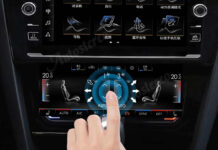Humanity’s essential to know where and what the object is in orbit to prevent its collision with the spacecraft. A new approach using neural network, provides unprecedented precision tracking space debris.
Achievement is described in a scientific paper published in the Journal of Laser Applications.
More than 50 stations, the laser tracking stations around the world watching the space debris. Potentially they can determine the coordinates of the object with millimeter precision. In reality, the signal reflected off the orbital hardware, is usually very weak. Engineers have to use sophisticated mathematical techniques to specify the location of the potentially hazardous object.
Not long ago, experts have proposed to use a learning neural network. But this alone does not solve all problems. After all, such a system can use a variety of methods of learning, and choose the optimal is a separate issue. You want the network could be trained on a reasonable number of objects, and while it was not hypersensitive, that is, the fact of the matter is issuing false positives.
the authors of the new article was used for training the neural network method is back propagation error. To optimize it, they used genetic algorithms and method levenberga-Marquardt.
the Engineers compared their approach with three classic ways to clarify the direction of a celestial object. The neural network was trained on 95 debris. For the same objects was determined and the factors that are necessary for the work of the three standard algorithms. Then the efficiency of each method was tested using 22 artifacts that were not included in the original training data.
Recall that there are several ways to specify the coordinates of the point on the celestial sphere. One of the most common is to specify the height and azimuth. Both of them are angles, and they are measured in degrees. Azimuth shows over kacoy point of the horizon is the desired object (or, more simply, in which direction to look to see it). The altitude is the angle between the horizontal and the direction of the object. It shows how high he is above the horizon.
the audit showed that the trained neural network is better clarifies the position of the object than the classical approaches. In comparison with the situation when you do not use any correction techniques, the accuracy of tracking the target using the new algorithm improved nine-fold in azimuth and three times the height. This method proved to be fast enough to operate in real time.
“After the increase in the pointing accuracy of the telescope using neural network to detect space debris with the cross-sectional area of one square meter from a distance of 1,500 kilometers,” says first author Tianmin MA (Ma Tianming) from the Chinese Academy of surveying and mapping.
For comparison: the height of the ISS orbit is about 400 kilometers. Thus, the method allows probing near space. At the same time the geostationary orbit (the most cluttered part of the cosmos) is approximately 36 thousand kilometers from Earth.
By the way, earlier “News.Science” (nauka.vesti.ru) wrote about the impending launch of the robot-kamikaze for cleaning space debris and the survival strategies of the satellites in the oceans of space junk.
Text: To.Science

















